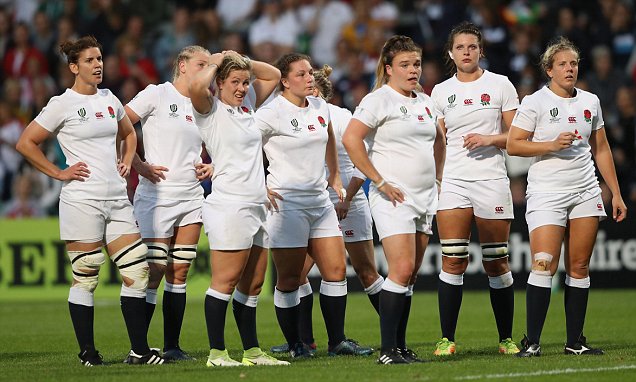For years, the phrase “England`s women`s rugby team” has been synonymous with an almost unshakeable dominance. Fresh off their 33rd consecutive victory and another World Cup title, the Red Roses stand atop the global rankings as a formidable force. Yet, amidst the echoes of their recent triumph, a new narrative is emerging from the halls of World Rugby: the era of predictable outcomes is drawing to a close, and a global challenge is brewing.
The Unprecedented Rise of the Red Roses
It`s hard to dispute England`s supremacy. Their recent 33-13 victory over Canada in the World Cup final at Twickenham wasn`t just another win; it was a statement. An unbeaten streak stretching to 33 matches speaks volumes about their consistency, strategic depth, and the sheer talent nurtured within their ranks. This level of sustained performance has set a towering benchmark for the sport, becoming both an aspiration and a challenge for every other nation.
A significant factor in this ascendancy, as World Rugby specialists acknowledge, is investment. England annually pours an estimated £15 million into its women`s rugby program—a figure unmatched by any other rugby union globally. This financial commitment translates directly into professional pathways, elite coaching, superior facilities, and comprehensive player welfare, creating an environment where excellence can thrive and, indeed, dominate.
A Global Awakening: The New Contenders Emerge
However, the very success that England has enjoyed is now serving as a catalyst for a global awakening. World Rugby’s prognosis is clear: several nations are no longer just participating; they are rapidly progressing, poised to disrupt the established order. Keep an eye on teams like:
- South Africa: Building formidable physical prowess and technical skill, signaling a serious intent to compete.
- Australia: With their natural athletic talent and hosting duties for the next World Cup, they are rapidly closing the gap.
- France: Always a powerhouse in men`s rugby, their women`s side is showing increasing strategic sophistication and tactical nous.
- Fiji and Brazil: Emerging forces bringing unique flair, athleticism, and a fresh perspective to the international stage.
This isn`t mere conjecture; it`s a trend fueled by increasing strategic investments and a growing belief in the potential of women`s sport across the globe. The pursuit of England`s standard is pushing every union to elevate its game, creating a more competitive, and ultimately, more exciting landscape.
“The era of predictable World Cups has reached its conclusion. The global landscape of women`s rugby is evolving, promising a far more challenging and thrilling future for all.” – World Rugby Statement (paraphrased)
Record-Breaking Success: The World Cup as a Catalyst
The recent Rugby World Cup served as a powerful testament to the sport`s burgeoning popularity. It wasn`t just a tournament; it was a phenomenon, shattering previous benchmarks and painting a vivid picture of a sport on the rise:
- Ticket Sales: Over 444,000 tickets sold, representing an impressive 92% of available capacity. This indicates a robust and growing fan base.
- Record Attendance: The final alone drew a staggering 81,885 spectators, a monumental achievement for any rugby event, let alone women`s rugby, at the iconic Twickenham.
- Television Viewership: The match captivated 5.8 million viewers in the UK, making it the highest-rated rugby event of the year in the country. This isn`t just about rugby; it`s about mainstream appeal.
- Demographic Shift: Crucially, more than half of the fans were women, and for half of *those*, it was their first live women`s rugby experience. This indicates a broadening appeal beyond traditional rugby demographics, bringing in new audiences and solidifying a diverse fan base.
These figures are not just statistics; they are a clear signal of a dramatic shift in public interest and engagement. World Rugby, perhaps with a touch of optimistic irony, declared that such metrics herald a “new stage of development.” They’ve already set a bold challenge for Australia, the hosts of the 2029 World Cup: “act bolder and bigger.” The gauntlet has been thrown, and the anticipation for the next global showcase is palpable.
The Future: A More Thrilling, Less Predictable Arena
What does this mean for England`s Red Roses? While their current dominance is undeniable, the coming years promise a far more challenging international arena. The landscape of women`s rugby is evolving from a largely predictable procession into a vibrant, multifaceted competition. For the fans, this means more nail-biting finishes, more upsets, and a higher standard of play across the board. For the sport itself, it signifies maturation and a thrilling leap into a truly global, competitive future.
England’s unwavering commitment to investment and development may have initially created a gulf, but it has also provided a shining example. Now, as other nations follow suit, that gulf is rapidly narrowing. The “predictable” era might indeed be over, replaced by an exhilarating unknown—a prospect that should excite every rugby enthusiast and propel the women`s game to unprecedented heights.

